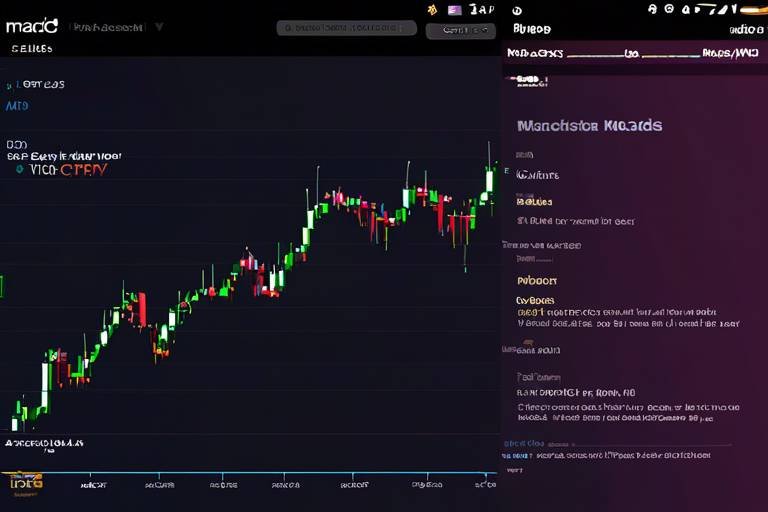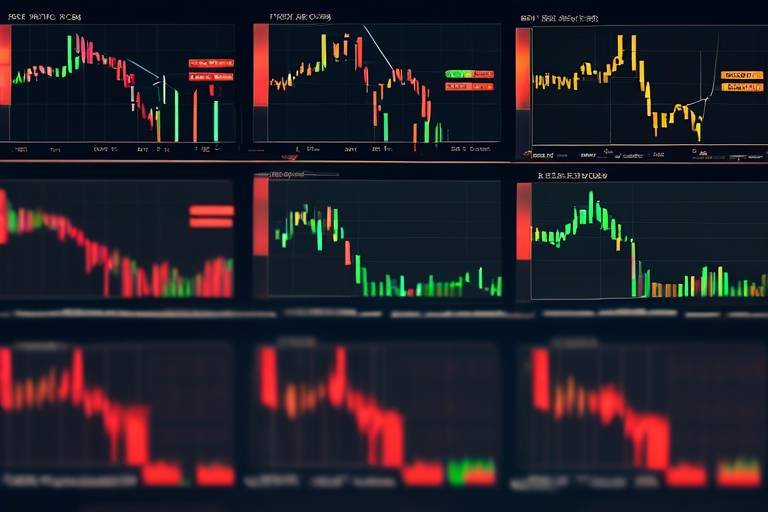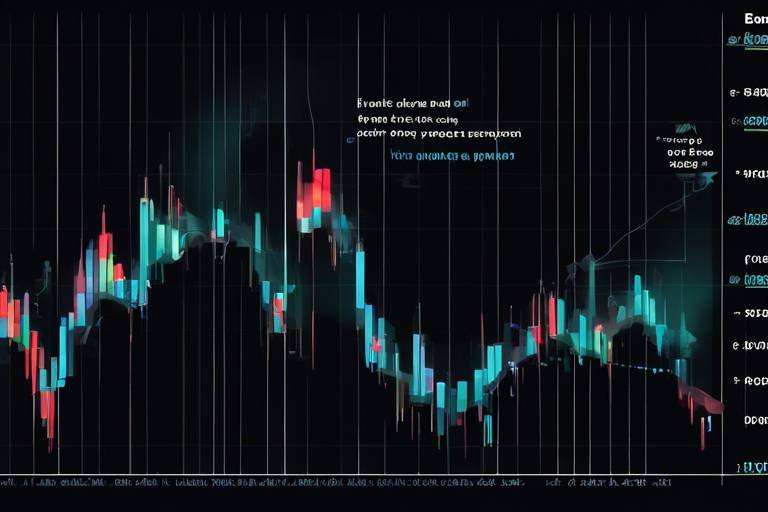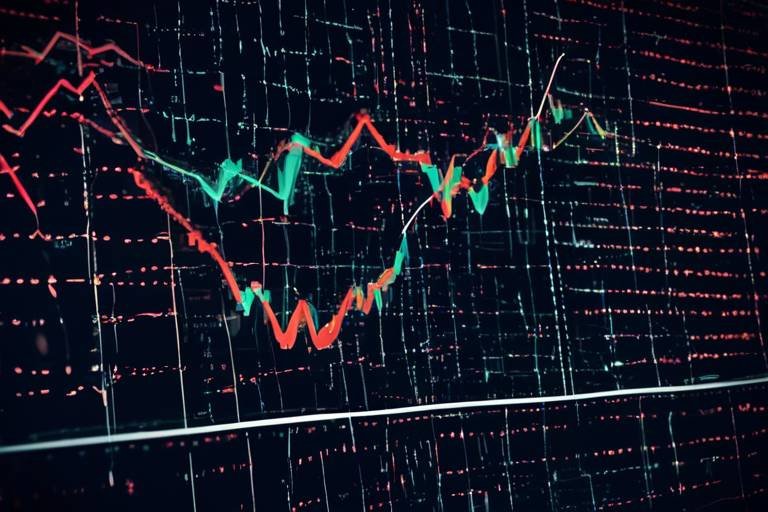The Benefits of Using Limit Orders in Technical Analysis
Investing in the financial markets can often feel like navigating a maze, especially when emotions run high. One of the tools that can help traders find their way is the limit order. Limit orders are not just a safety net; they are a strategic advantage that can significantly enhance your trading experience. By setting specific prices for buying or selling assets, limit orders empower traders to take control of their trades, rather than leaving everything to chance. In this article, we will explore the various benefits of utilizing limit orders within the framework of technical analysis and how they can improve your trading strategies and risk management.
Before diving into the benefits, it's essential to understand what limit orders are. A limit order is a type of order to buy or sell a security at a specified price or better. For instance, if you want to buy a stock but believe it’s currently overpriced, you can set a limit order at your desired price. If the stock reaches that price, your order will execute. There are two main types of limit orders: buy limit orders and sell limit orders. A buy limit order allows you to purchase an asset at or below a specified price, while a sell limit order lets you sell an asset at or above a specified price. This gives traders the flexibility to choose their entry and exit points, making it a critical component of any trading strategy.
Technical analysis is the art of predicting future price movements based on historical data. By analyzing price charts and trading volumes, traders can identify patterns that suggest where the market is headed. This method is like looking at the stars to navigate a ship; it provides direction based on past experiences. Limit orders play a crucial role in this approach by allowing traders to set their trades based on technical indicators. For example, if a trader identifies a support level through technical analysis, they can place a buy limit order just above that level to capitalize on potential upward movement. This combination of technical analysis and limit orders can lead to more informed and strategic trading decisions.
Integrating limit orders with technical indicators can significantly enhance your trading strategy. Popular indicators, such as moving averages and the Relative Strength Index (RSI), can guide traders in setting their limit orders effectively. For example, if a trader notices that the price is approaching a moving average, they might set a limit order to buy, anticipating a bounce back. This synergy between limit orders and technical indicators creates a more robust trading strategy, allowing for better entry and exit points.
Moving averages are essential for smoothing out price data, making it easier to spot trends. By analyzing the average price over a specific period, traders can identify potential support or resistance levels. When combined with limit orders, moving averages can optimize trading strategies. For instance, if the price is approaching a key moving average, traders might set a buy limit order just above that average, anticipating that the price will rebound. This approach not only helps in making informed decisions but also minimizes the risk of entering a trade at unfavorable prices.
The RSI is a momentum oscillator that measures the speed and change of price movements. It ranges from 0 to 100 and is typically used to identify overbought or oversold conditions. Traders can set limit orders based on RSI signals; for example, if the RSI indicates that an asset is oversold (below 30), a trader might set a buy limit order to capture a potential price rebound. Conversely, if the RSI indicates an overbought condition (above 70), a trader might place a sell limit order to lock in profits before a potential downturn. This proactive approach can lead to better trading outcomes.
Limit orders offer several advantages that can transform your trading experience. Here are the key benefits:
- Price Control: Limit orders allow you to dictate the price at which you buy or sell an asset, ensuring you don't pay more or sell for less than you intended.
- Reduced Emotional Trading: By setting limit orders, traders can avoid the emotional rollercoaster that often accompanies trading, making more rational decisions.
- Improved Strategy Execution: Limit orders help in executing trades according to your strategy rather than reacting impulsively to market movements.
Effective risk management is crucial for long-term success in trading. Limit orders can help mitigate risks by allowing traders to set predefined entry and exit points. This means you can plan your trades in advance and avoid making hasty decisions that could lead to significant losses. For instance, if you're entering a trade, you can set a limit order to sell at a specific profit target while also placing a stop-loss order to protect your investment if the market moves against you.
Stop-loss orders work hand-in-hand with limit orders to safeguard your investments. A stop-loss order automatically sells your asset when it reaches a certain price, preventing further losses. For example, if you buy a stock at $50 and set a stop-loss order at $45, your shares will automatically sell if the price falls to that level. This strategy is particularly useful in volatile markets, where prices can fluctuate dramatically. By using stop-loss orders in conjunction with limit orders, you can create a more comprehensive risk management plan.
Using limit orders fosters better trading discipline. When traders set specific price targets, they are more likely to stick to their strategies and avoid impulsive decisions driven by fear or greed. Think of it as setting a GPS for your trading journey; it keeps you on track and helps you avoid detours that could lead to losses. By incorporating limit orders into your trading strategy, you cultivate a more disciplined approach that can lead to more consistent results.
1. What is the main advantage of using limit orders?
The main advantage is that limit orders allow traders to control the price at which they buy or sell assets, reducing the risk of making impulsive decisions during market fluctuations.
2. Can limit orders guarantee execution?
No, limit orders do not guarantee execution. They will only execute if the market reaches the specified price.
3. How do limit orders fit into a trading strategy?
Limit orders can enhance a trading strategy by providing clear entry and exit points based on technical analysis, allowing for better risk management and discipline.
4. What is the difference between a limit order and a market order?
A limit order specifies the price at which you are willing to buy or sell, while a market order executes immediately at the current market price.
5. Are limit orders suitable for all types of trading?
Yes, limit orders can be beneficial for various trading styles, including day trading, swing trading, and long-term investing.

Understanding Limit Orders
Limit orders are essential tools in the trading world, acting as a bridge between the trader’s strategies and the market's price movements. At their core, limit orders allow investors to specify the exact price at which they are willing to buy or sell an asset. This precision offers a level of control that can be incredibly beneficial, especially in the fast-paced environment of financial markets. Imagine trying to catch a fish with a net; a limit order is like setting a trap at the right spot rather than just casting your net blindly. It ensures that you only engage when the conditions are favorable.
There are two primary types of limit orders: buy limit orders and sell limit orders. A buy limit order is placed below the current market price, meaning the trader is looking to purchase an asset at a lower price. Conversely, a sell limit order is set above the current market price, allowing the trader to sell their asset at a higher price than what is currently available. This strategic placement is crucial for maximizing potential profits while minimizing losses.
In essence, limit orders can be thought of as a way to automate trading decisions based on predetermined criteria. When the market reaches the specified price, the order is executed, freeing traders from the constant need to monitor their positions. This can be a game-changer, especially for those who may not have the luxury of time to watch the markets throughout the day. However, it’s important to note that while limit orders provide control, they do not guarantee execution. If the market price never reaches the limit set by the trader, the order will remain unfilled, creating a potential missed opportunity.
To illustrate how limit orders work, consider the following table:
| Order Type | Market Condition | Example |
|---|---|---|
| Buy Limit Order | Market price is $50 | Order placed at $48 |
| Sell Limit Order | Market price is $50 | Order placed at $52 |
As shown in the table, a buy limit order is executed only if the market price drops to $48, allowing the trader to purchase the asset at a more favorable price. On the flip side, a sell limit order will only execute if the price rises to $52, ensuring that the trader sells at a profit. This capability to set specific price points is what makes limit orders an integral part of a well-rounded trading strategy.
In conclusion, understanding limit orders is vital for anyone looking to navigate the complexities of trading effectively. They provide a structured approach to entering and exiting positions, allowing traders to maintain their strategy while minimizing emotional decision-making. By incorporating limit orders into their trading arsenal, investors can enhance their ability to manage risk and capitalize on market opportunities with greater confidence.

The Role of Technical Analysis
Technical analysis is like the compass for traders navigating the unpredictable waters of the financial markets. It involves the study of historical price movements and trading volumes to forecast future price trends. Imagine you're trying to predict the weather based on past patterns; that’s essentially what technical analysis does for trading. By analyzing charts and indicators, traders can identify potential entry and exit points, making informed decisions rather than guessing wildly.
One of the most fascinating aspects of technical analysis is its reliance on the idea that market sentiment is reflected in price movements. Traders believe that all available information is already priced into the asset, meaning that past performance can give clues about future behavior. Think of it as reading the mood of a crowd: if you notice a lot of excitement, it might be a good time to buy, while a downturn might signal it's time to sell. This is where limit orders come into play, allowing traders to set specific prices at which they want to buy or sell, thereby aligning their strategies with the insights gained from technical analysis.
By combining limit orders with technical analysis, traders can enhance their ability to capitalize on market movements. For instance, if a trader identifies a support level—where prices tend to bounce back up—they can place a limit order just above this level. This way, they’re ready to buy as soon as the price hits their target, ensuring they don’t miss out on potential profits. On the flip side, if they spot a resistance level—where prices typically fall—they can set a limit order to sell at that point. This proactive approach helps to maximize gains and minimize losses.
In essence, technical analysis serves as a framework for understanding market dynamics, while limit orders provide the tools to execute trades based on that understanding. Together, they form a powerful duo that can significantly enhance trading strategies. Traders can use various indicators, such as moving averages or the Relative Strength Index (RSI), to inform their limit orders, making their trading decisions more data-driven and less emotional. The synergy between these two elements can lead to improved outcomes, fostering a more disciplined approach to trading.

Combining Limit Orders with Technical Indicators
When it comes to trading, the synergy between limit orders and technical indicators can be a game changer. Imagine you’re a chef crafting a perfect dish; just as you need the right ingredients in the right proportions, traders require the right tools to enhance their strategies. By combining limit orders with technical indicators, you can significantly improve your entry and exit points, making your trading experience more precise and rewarding.
Let’s break this down a bit. Technical indicators are mathematical calculations based on historical price and volume data, and they help traders identify trends and potential reversal points. Some of the most popular indicators include Moving Averages, Relative Strength Index (RSI), and Bollinger Bands. By integrating limit orders with these indicators, you can set up trades that are not only strategic but also timely.
For instance, when using a Moving Average, traders often look for crossovers—where a short-term moving average crosses above a long-term moving average, signaling a potential buy. By placing a limit order at the crossover point, you can ensure that you enter the market at a favorable price. This tactic minimizes the risk of entering too late and missing out on the upward momentum.
Similarly, the Relative Strength Index (RSI) is a momentum oscillator that measures the speed and change of price movements. Traders often use it to identify overbought or oversold conditions. If the RSI indicates that an asset is oversold (typically below 30), a trader might set a limit order just above the current price to capitalize on a potential rebound. This approach allows you to buy low and sell high, adhering to the golden rule of trading.
Moreover, combining limit orders with technical indicators fosters a disciplined trading approach. By setting specific price targets based on indicator signals, you avoid the emotional pitfalls of trading, such as fear and greed. Instead of making impulsive decisions, you’re guided by data-driven strategies. In essence, technical indicators act like a compass, guiding you through the often turbulent waters of the trading world.
To illustrate the effectiveness of this combination, consider the following table that summarizes how different technical indicators can be paired with limit orders:
| Technical Indicator | Limit Order Strategy |
|---|---|
| Moving Averages | Place a limit order at the crossover point to buy or sell. |
| Relative Strength Index (RSI) | Set a limit order when RSI indicates overbought or oversold conditions. |
| Bollinger Bands | Use limit orders to buy at the lower band and sell at the upper band. |
In conclusion, the combination of limit orders with technical indicators not only enhances your trading strategy but also empowers you to make informed decisions. By leveraging these tools, you can navigate the complexities of the market with confidence and precision, ultimately leading to a more successful trading experience.

Moving Averages
Moving averages are one of the most widely used tools in technical analysis, acting like a smooth blanket over the chaotic fluctuations of price data. Imagine trying to read a book while someone is shaking it; that's what it feels like to look at raw price charts without the clarity that moving averages provide. By calculating the average price of an asset over a specific period, moving averages help traders identify trends more clearly, allowing them to make informed decisions about when to enter or exit trades.
There are two primary types of moving averages that traders often utilize: the Simple Moving Average (SMA) and the Exponential Moving Average (EMA). The SMA gives equal weight to all prices in the period, which can be useful for identifying long-term trends. On the other hand, the EMA places greater importance on more recent prices, making it more responsive to new information. This can be particularly beneficial in fast-moving markets where staying ahead of the curve is crucial.
Now, how can limit orders be effectively combined with moving averages? Well, let’s paint a picture: suppose you’re watching a stock that has been on a downward trend, and you notice that it’s approaching its 50-day moving average. You believe that this moving average could act as a support level. Instead of waiting for the price to hit this level and then deciding what to do, you can set a limit order just above the moving average. This strategy allows you to buy the stock at a price that you deem favorable, while also taking advantage of the potential support indicated by the moving average.
Moreover, moving averages can signal potential exit points as well. For instance, if you’re in a trade and the price crosses below a moving average, it might be a good time to consider selling. In this case, setting a limit order at a predefined price below the moving average can help you capture profits before the price potentially declines further. This proactive approach can significantly enhance your trading strategy by allowing you to react quickly to market movements without being emotionally swayed.
In summary, moving averages serve as a compass in the often turbulent sea of trading. By integrating limit orders with moving averages, traders can gain a clearer view of market trends, make more informed decisions, and ultimately improve their trading outcomes. Remember, the key to successful trading lies not just in the tools you use, but in how you use them to navigate the complexities of the market.
- What is the difference between SMA and EMA? The Simple Moving Average (SMA) gives equal weight to all prices, while the Exponential Moving Average (EMA) gives more weight to recent prices, making it more responsive to new data.
- How do I choose the right period for moving averages? The choice of period depends on your trading strategy; shorter periods (like 10 or 20 days) are better for short-term trading, while longer periods (like 50 or 200 days) are more suitable for long-term trends.
- Can moving averages guarantee profits? No, moving averages are tools that help identify trends and potential entry or exit points, but they do not guarantee profits. It's essential to combine them with other indicators and sound risk management practices.

Relative Strength Index (RSI)
The is a powerful momentum oscillator that traders often rely on to assess the strength of a security's price action. It operates on a scale of 0 to 100, providing a clear indication of whether an asset is considered overbought or oversold. Typically, an RSI above 70 indicates that an asset might be overbought, suggesting a potential price pullback, while an RSI below 30 signals that it may be oversold, hinting at a possible price rebound. This makes the RSI an essential tool for traders looking to make informed decisions about their entry and exit points.
When integrating limit orders with the RSI, traders can capitalize on these signals to enhance their trading strategies. For instance, if the RSI indicates that a stock is oversold, a trader might set a limit order to buy at a price slightly above the current market price, anticipating a rebound. Conversely, if the RSI shows that a stock is overbought, a trader could set a limit order to sell at a price that reflects their target profit, thereby maximizing returns while minimizing risk.
To illustrate how traders can effectively use the RSI with limit orders, consider the following table that outlines potential scenarios:
| RSI Signal | Action | Limit Order Strategy |
|---|---|---|
| Overbought (RSI > 70) | Sell | Set a limit order to sell at a price above the current market price to capture potential profit. |
| Oversold (RSI < 30) | Buy | Set a limit order to buy at a price below the current market price, anticipating a price increase. |
By using limit orders in conjunction with RSI signals, traders can create a disciplined approach to trading. This combination not only allows for better timing in entering and exiting positions but also helps traders avoid emotional decisions that can lead to costly mistakes. It's like having a roadmap that guides you through the often chaotic world of trading, ensuring that you stay on course even when the market gets turbulent.
In conclusion, the RSI is more than just a number; it’s a valuable tool that can significantly enhance your trading strategy when paired with limit orders. By understanding how to interpret RSI signals and applying them through limit orders, traders can effectively navigate the markets with greater confidence and precision.

Benefits of Using Limit Orders
When it comes to trading, the benefits of using limit orders cannot be overstated. These orders provide a level of control that is essential for both novice and seasoned traders alike. Imagine you're at a bustling market, and you see a beautiful painting. You want to buy it, but only if the price drops to a certain level. This is exactly how limit orders function in the trading world—they allow you to set a specific price at which you are willing to buy or sell an asset.
One of the most significant advantages of limit orders is price control. Unlike market orders, which execute immediately at the current market price, limit orders ensure that you only buy or sell at your desired price. This means you can avoid overpaying for an asset or selling at a loss. For example, if you're looking to buy a stock currently priced at $100, but you only want to purchase it for $95, you can set a limit order at $95. If the stock price drops to that level, your order will trigger, allowing you to buy at a price you’re comfortable with.
Another key benefit is the reduction of emotional trading. Trading can be an emotional rollercoaster, especially in volatile markets. By using limit orders, you can remove some of that emotional aspect from your trading decisions. When you set a limit order, you're making a calculated decision ahead of time, rather than reacting impulsively to market fluctuations. This strategic approach not only helps in sticking to your trading plan but also minimizes the chances of making hasty decisions driven by fear or greed.
Moreover, limit orders can enhance your overall trading strategy. They allow you to plan your trades in advance and set specific entry and exit points based on your analysis. For instance, if you’ve identified a strong support level at $90 for a stock, you can place a limit order to buy at that price. This helps in executing trades that align with your technical analysis, increasing the likelihood of successful trades.
Additionally, limit orders can be particularly beneficial in illiquid markets, where the trading volume is low and prices can swing wildly. In such scenarios, using market orders can lead to unfavorable prices due to slippage. By using limit orders, you can ensure that you are not caught off guard by sudden price changes, providing a more stable trading experience.
In summary, the benefits of using limit orders include:
- Price Control: Ensures you buy or sell at your desired price.
- Reduced Emotional Trading: Helps in maintaining discipline and sticking to your strategy.
- Enhanced Trading Strategy: Allows for pre-planned trades based on analysis.
- Protection in Illiquid Markets: Minimizes risks associated with sudden price swings.
Incorporating limit orders into your trading strategy not only empowers you with better control but also instills a sense of confidence in your trading decisions. They allow you to navigate the unpredictable waters of trading with a clear plan, thus enhancing your potential for success.
1. What is a limit order?
A limit order is a type of order to buy or sell a security at a specified price or better. It ensures that you do not pay more than you want when buying, or receive less than you want when selling.
2. How does a limit order differ from a market order?
A market order executes immediately at the current market price, while a limit order only executes at your specified price or better, providing more control over the trade.
3. Can limit orders be used in all markets?
Yes, limit orders can be used in various markets, including stocks, forex, and cryptocurrencies, making them a versatile tool for traders.
4. What happens if my limit order is not executed?
If the market price does not reach your specified limit price, the order will not be executed. You can choose to adjust or cancel the order as needed.
5. Are there any risks associated with limit orders?
While limit orders provide control, they may also result in missed opportunities if the market price moves quickly and does not reach your limit price.

Risk Management with Limit Orders
When it comes to trading, one of the most critical aspects that can make or break your success is risk management. Think of it as the safety net that catches you when you fall. Limit orders play a significant role in this process, allowing traders to set predefined entry and exit points that align with their risk tolerance. By using limit orders, traders can avoid the emotional rollercoaster that often accompanies spontaneous trading decisions. Imagine trying to catch a falling knife—without limit orders, you might end up getting cut. However, with them, you can dictate your entry and exit points, making your trading strategy much more robust.
One of the primary benefits of using limit orders is that they enable traders to establish a clear plan before entering a trade. This planning phase is crucial because it allows you to analyze market conditions and decide the best price at which to buy or sell. For example, if you believe a stock is undervalued at $50, you can set a limit order at that price. This way, you won't impulsively buy at a higher price due to market excitement. Instead, you stick to your strategy, which is essential for long-term success.
Moreover, limit orders also support the implementation of stop-loss orders, which are essential for protecting your investments. A stop-loss order automatically sells your asset at a predetermined price, helping to minimize losses in volatile markets. When combined with limit orders, you can create a solid risk management framework. For instance, if you set a limit order to buy a stock at $50 and a stop-loss order at $48, you have already defined your risk before entering the trade. This approach not only safeguards your capital but also allows you to trade with greater confidence.
To illustrate how limit orders and stop-loss orders work together, consider the following table:
| Order Type | Action | Price |
|---|---|---|
| Limit Order | Buy | $50 |
| Stop-Loss Order | Sell | $48 |
In addition to these orders, using limit orders can significantly enhance your trading discipline. When you set specific price targets, you are more likely to stick to your strategy rather than succumb to the pressures of the market. This discipline is akin to a marathon runner pacing themselves; they know they need to conserve energy for the long haul instead of sprinting at the start and burning out quickly. By adhering to your limit orders, you can avoid impulsive decisions driven by fear or greed, which are common pitfalls in trading.
Ultimately, effective risk management through limit orders is not just about preventing losses; it's about creating a structured approach that allows you to trade confidently. By defining your entry and exit points, implementing stop-loss orders, and fostering discipline, you can navigate the often turbulent waters of trading with greater ease. Remember, successful trading is not just about making profits; it's about managing risks effectively to ensure long-term sustainability in the market.

Setting Stop-Loss Orders
When it comes to trading, protecting your investments is just as crucial as making profits. This is where stop-loss orders come into play. A stop-loss order is essentially a safety net that helps you limit your losses by automatically selling an asset when it reaches a specified price. Imagine you're on a roller coaster; the thrill of the ride can be exhilarating, but you definitely want a safety harness to keep you secure. Stop-loss orders act as that harness in the unpredictable world of trading.
One of the most significant advantages of using stop-loss orders in conjunction with limit orders is the ability to maintain control over your trades. Unlike market orders, which execute immediately at the current market price, a stop-loss order only triggers when the price hits your predetermined level. This means you can set your exit point ahead of time, allowing you to walk away from your screen without constantly worrying about price fluctuations.
To effectively use stop-loss orders, you need to consider a few key factors:
- Determine Your Risk Tolerance: Before setting a stop-loss order, assess how much you're willing to lose on a trade. This will help you decide the appropriate distance from your entry point.
- Select an Appropriate Price Level: Your stop-loss price should be based on technical analysis, such as support and resistance levels. For instance, if you're buying a stock that has a strong support level at $50, you might set your stop-loss order at $48 to give it some room to fluctuate.
- Regularly Review and Adjust: Market conditions change, and so should your stop-loss orders. Regularly reviewing your trades will allow you to adjust your stop-loss levels based on new information or changes in market trends.
Implementing stop-loss orders can significantly enhance your trading strategy. They not only protect your capital but also help you maintain emotional discipline. When the market takes a downturn, it's easy to panic and make impulsive decisions. However, with a stop-loss order in place, you can stick to your plan and avoid the emotional roller coaster that often accompanies trading.
In volatile markets, stop-loss orders can be particularly valuable. They serve as an automatic exit strategy, ensuring that you don't get caught holding onto a losing position for too long. Think of it like having an umbrella on a rainy day; it may not prevent the rain, but it certainly keeps you dry when the storm hits.
In conclusion, setting stop-loss orders is a fundamental aspect of risk management in trading. By defining your exit points in advance, you can navigate the market with greater confidence and less anxiety. So, before you dive into your next trade, take a moment to consider where you would like to set your stop-loss order. It could be the difference between a small loss and a significant one.
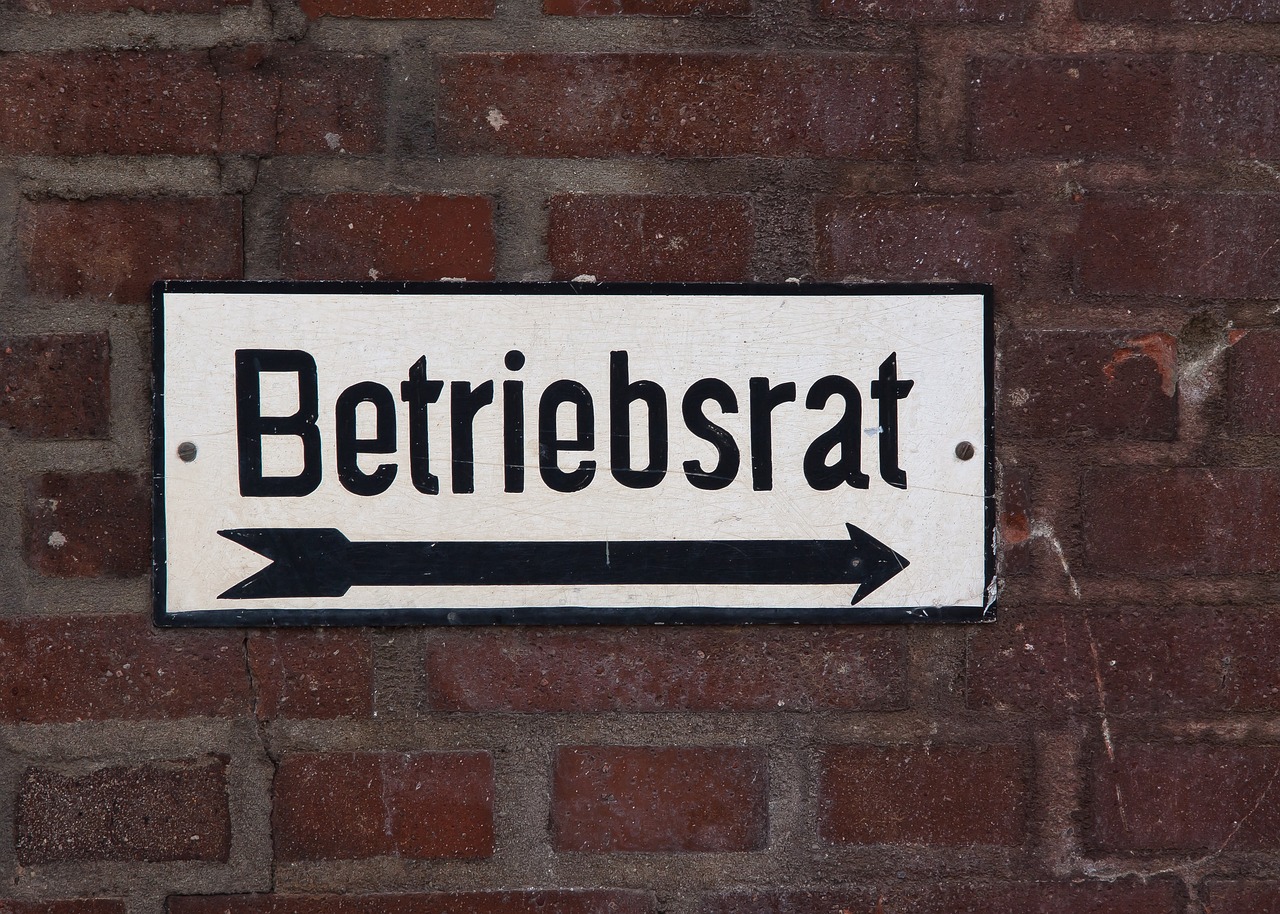
Enhancing Trading Discipline
When it comes to trading, discipline is often a trader's best friend. Imagine you're on a diet, and you’ve set specific goals for what you can eat. If you stick to those goals, you’re likely to see results. The same principle applies to trading with limit orders. By setting predetermined price points for buying or selling assets, traders can cultivate a disciplined approach that helps them avoid emotional decision-making. This is particularly important in the fast-paced world of trading, where fear and greed can lead to hasty choices.
One of the most significant advantages of using limit orders is that they allow traders to stick to their trading plans. Think of it as having a roadmap for a road trip. Without it, you might take detours that lead you away from your destination. Similarly, when traders set limit orders, they are defining their entry and exit points in advance, which helps them remain focused on their strategy rather than getting sidetracked by market fluctuations.
Moreover, limit orders can help traders resist the temptation to chase after the market. Picture this: the price of an asset is soaring, and you feel the urge to jump in because everyone else is. However, if you have a limit order set at a price you’re comfortable with, you can avoid the emotional rollercoaster that often accompanies such decisions. Instead of acting on impulse, you allow the market to come to you, which can lead to better entry points and improved profitability.
To further illustrate this point, consider the following table that outlines the differences between market orders and limit orders:
| Aspect | Market Orders | Limit Orders |
|---|---|---|
| Execution Speed | Immediate | Depends on market reaching set price |
| Price Control | No control over price | Full control over entry/exit price |
| Emotional Trading | Higher risk of emotional decisions | Encourages sticking to strategy |
| Best for | Quick trades | Strategic trading |
Incorporating limit orders into your trading strategy not only enhances discipline but also promotes a systematic approach to trading. This is essential for long-term success, as it encourages traders to follow their plans, even in the face of market volatility. By setting specific targets, traders can focus on their strategies instead of reacting impulsively to every price movement.
In conclusion, enhancing trading discipline through the use of limit orders is a game-changer for many traders. It transforms the chaotic nature of trading into a more structured and methodical process, allowing individuals to achieve their financial goals without falling prey to emotional pitfalls. So, the next time you're tempted to make a snap decision, remember the power of limit orders and how they can keep you on the right path.
- What is a limit order? A limit order is an order to buy or sell an asset at a specific price or better.
- How do limit orders enhance trading discipline? They help traders stick to their predetermined strategies, reducing the influence of emotions.
- Can limit orders guarantee execution? No, limit orders will only execute if the market reaches the specified price.
- Are limit orders suitable for all types of trading? While they are beneficial for many strategies, they may not be ideal for high-frequency trading where speed is crucial.
Frequently Asked Questions
- What are limit orders and how do they work?
Limit orders are a type of order that allows traders to specify the exact price they want to buy or sell an asset. When the market reaches that price, the order is executed. This gives traders better control over their trades compared to market orders, which execute at the current market price.
- How do limit orders enhance trading strategies?
Limit orders can enhance trading strategies by allowing traders to set precise entry and exit points based on their analysis. This helps in avoiding emotional trading decisions and sticking to a well-thought-out plan, ultimately improving overall trading performance.
- Can limit orders be combined with technical indicators?
Absolutely! Limit orders work well with various technical indicators, such as moving averages and the Relative Strength Index (RSI). By aligning limit orders with these indicators, traders can optimize their entry and exit points, leading to better trading outcomes.
- What is the role of moving averages in conjunction with limit orders?
Moving averages help smooth out price data and identify trends. Traders can use limit orders in relation to moving averages to enter trades when prices pull back to a moving average level, enhancing the likelihood of successful trades.
- How does the RSI help in setting limit orders?
The RSI is a momentum oscillator that indicates overbought or oversold conditions. Traders can set limit orders based on RSI signals to capitalize on potential reversals, ensuring they enter trades at optimal points.
- What are the key benefits of using limit orders?
Some key benefits of using limit orders include better price control, reduced emotional trading, and the ability to set predefined entry and exit points. These factors can significantly improve a trader's overall effectiveness in the market.
- How can limit orders assist in risk management?
Limit orders play a crucial role in risk management by allowing traders to set stop-loss orders. This helps protect investments by ensuring that trades are exited at predetermined levels, minimizing potential losses in volatile markets.
- What are stop-loss orders and how do they work with limit orders?
Stop-loss orders are designed to limit an investor's loss on a position. When used in conjunction with limit orders, they help traders exit positions at specific price levels, providing an additional layer of protection against market fluctuations.
- How do limit orders promote trading discipline?
Setting limit orders encourages traders to stick to their strategies by defining specific price targets. This reduces the temptation to make impulsive decisions based on market emotions, fostering a more disciplined trading approach.







